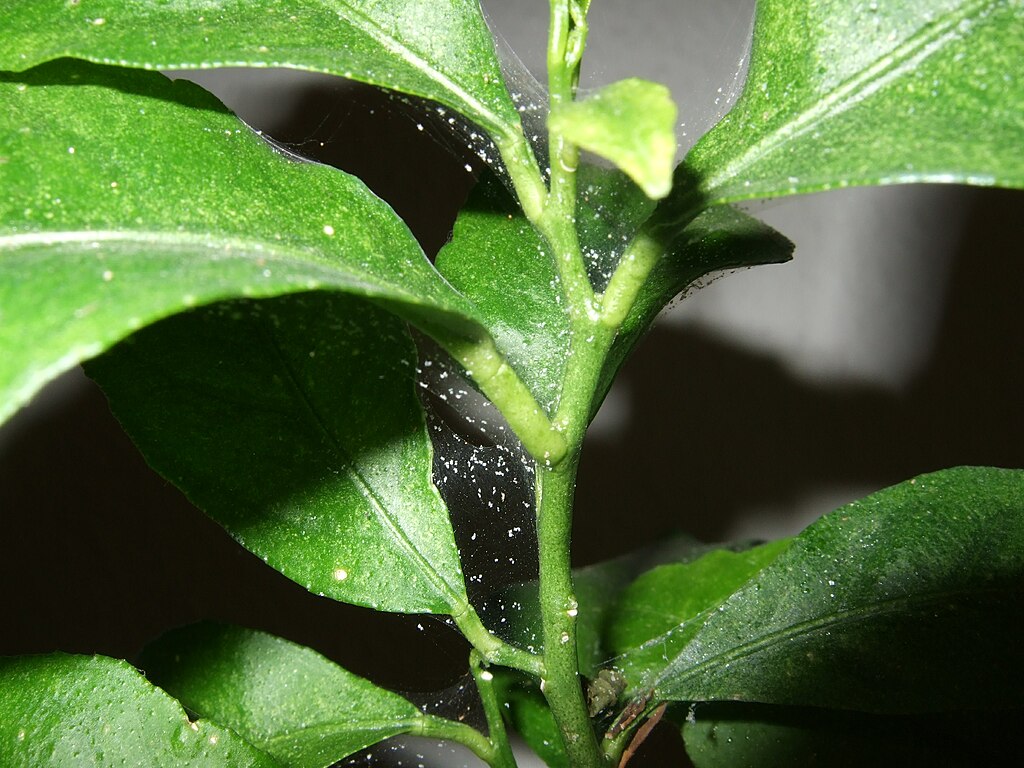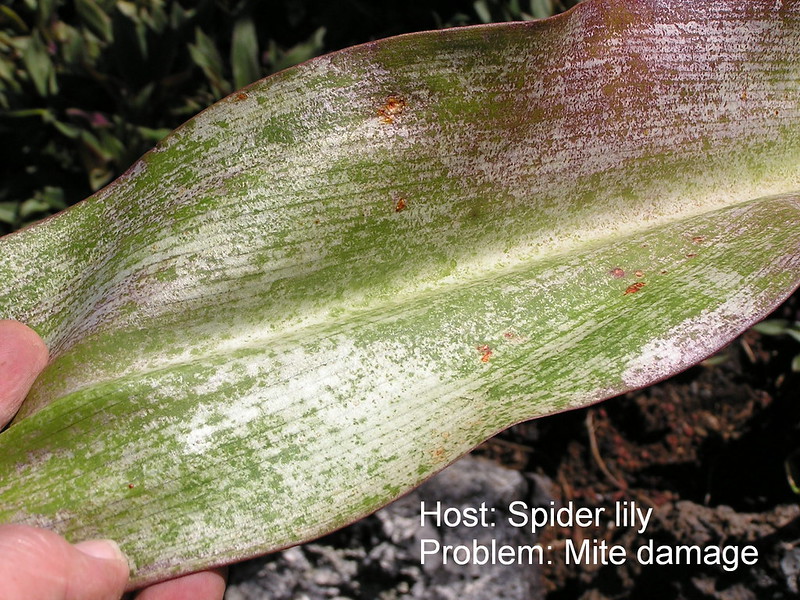If you’re a houseplant lover, you know how rewarding it is to watch your plants thrive, but unfortunately, the journey isn’t always smooth. One of the most common pests that can infest houseplants is the spider mite. These tiny, often invisible invaders can cause a great deal of damage to your plants if left unchecked. In this post, we’ll break down everything you need to know about spider mites—from what they are to how to get rid of them—so you can keep your plants healthy and pest-free.
What Are Spider Mites?
Spider mites are tiny arachnids, closely related to spiders, ticks, and other mites. Despite their name, they are not true spiders, but they do share some similarities, like having eight legs. The most common species that affect houseplants is the two-spotted spider mite (Tetranychus urticae), though several others can also cause trouble.

These pests are extremely small (about 3/16 of an inch in size), and they tend to go unnoticed until the damage becomes quite severe. While they are most notorious for infesting plants outdoors, they can also wreak havoc in indoor plant collections, especially when conditions are dry and warm.
What Do Spider Mites Look Like?
Due to their minuscule size, spider mites are not easy to spot with the naked eye. However, you can sometimes see them moving as tiny specks on the undersides of leaves, especially if you use a magnifying glass.
- Color: Spider mites are usually red, yellow, or green, and the two-spotted spider mite has distinct dark spots on either side of its body.
- Appearance: These pests are most noticeable when they spin fine, web-like silk threads across the undersides of leaves or between stems. This webbing is an indicator that an infestation is growing.

If you’re unsure whether you have spider mites, try tapping a leaf over a white sheet of paper. If you see tiny specks moving, those are likely spider mites.
What Do Spider Mites Do to Plants?
Spider mites feed on the sap of plants. They pierce the cells of plant leaves using needle-like mouthparts and suck out the contents. This weakens the plant and causes visible damage, which can vary from mild to severe depending on the size of the infestation.
Common Symptoms of Spider Mite Damage:
- Speckled or stippled leaves: The feeding creates small, discolored spots on the leaf surface, which may appear yellow, silver, or white.
- Yellowing (chlorosis): As spider mites continue to feed, the affected areas of the leaf may turn yellow.
- Leaf drop: In severe cases, the plant may drop its leaves, especially if the mites attack the older foliage first.
- Webbing: Look for fine, web-like silk on the undersides of leaves and around the stem joints. This webbing is created by the mites to protect their eggs and larvae.
- Stunted growth: Prolonged damage can lead to overall poor plant health, with slower growth or deformed leaves.
Spider mites prefer dry conditions, so they are often found in the warm, low-humidity environments of your home. Without intervention, a small infestation can quickly escalate, leading to significant plant damage.
How Do Spider Mites Spread from Plant to Plant?
Spider mites can be transmitted through various means:
- Direct contact: If one infested plant touches another, spider mites can easily spread.
- Airborne transmission: Spider mites are light and small enough to be carried by the wind or air currents, which is why a single plant can quickly cause an infestation in a room.
- Human activity: Mites can hitch a ride on hands, gardening tools, or even clothing, moving from one plant to another without you even realizing it.
Given their ability to spread quickly, it’s important to isolate any plants showing signs of an infestation and treat them promptly.
Signs of Spider Mite Infestation
Detecting a spider mite infestation early is crucial to preventing major damage. Here are the key signs to look for:
- Discolored Leaves: Watch for yellow, silver, or speckled patches, especially on older leaves.

- Fine Webbing: A common sign of spider mites is the appearance of delicate, silk-like webs, often on the undersides of leaves and around stems.
- Leaf Curling: Infested leaves may curl, and in severe cases, the edges can turn brown and brittle.
- Visible Mites: If you look closely (with a magnifying glass), you may see tiny specks moving across the leaves. These are the spider mites.
How to Prevent Spider Mites
Prevention is always better than treatment. Here’s how you can minimize the risk of spider mite infestations:
- Maintain High Humidity: Spider mites thrive in dry environments. Increase humidity around your plants by:
- Misting the leaves occasionally.
- Using a humidifier in your home.
- Grouping plants together to create a microclimate with higher humidity.
- Regularly Inspect Your Plants: Regular plant inspections are key. Check both the tops and the undersides of leaves, where spider mites often reside. Early detection makes treatment much easier.
- Keep Your Plants Clean: Wipe the leaves with a damp cloth or use a gentle stream of water to rinse off any dust, webs, or pests. Cleanliness will help prevent pest buildup.
- Quarantine New Plants: Always isolate new plants for a couple of weeks to ensure they don’t introduce pests into your home collection. This gives you time to check for signs of spider mites and other common plant pests.
- Avoid Overheating: Keep your plants at a comfortable temperature (65-75°F or 18-24°C) and avoid placing them in direct sunlight or hot, dry spots like near radiators or air vents.
How to Get Rid of Spider Mites
If you’ve noticed an infestation, don’t panic—there are several methods to eliminate spider mites from your plants:
- Water Spray: Use a strong stream of water to wash off the mites. Focus on the undersides of the leaves and around the stems. This can help remove a large portion of the mites and their webs.
- Insecticidal Soap: Insecticidal soap is effective against spider mites. Apply it thoroughly to the leaves and stems. Be sure to cover the undersides of the leaves where mites hide.
- Neem Oil: Neem oil is a natural pesticide that works well for spider mite infestations. It disrupts the mites’ feeding and reproductive cycles, helping to reduce their numbers over time. Mix according to the package instructions and spray on affected areas.
- Rubbing Alcohol: A solution of 70% isopropyl alcohol and water (about 1:1) can kill spider mites on contact. You can use a spray bottle or cotton swabs to apply it to the leaves.
- Miticides: For larger infestations, you may need a more potent solution. Miticides (pesticides specifically for mites) can help eliminate them. However, use with caution and follow all instructions carefully.
- Introduce Predatory Mites: If you prefer an organic approach, consider introducing predatory mites such as Phytoseiulus persimilis. These mites feed on spider mites and can help control the infestation naturally.
- Repeat Treatments: Spider mites reproduce rapidly, so you may need to repeat your treatments every 5-7 days until the infestation is completely gone. Continue monitoring your plants for signs of recurring pests.
Conclusion
Spider mites may be small, but they are mighty when it comes to damaging your plants. With early detection, proper care, and timely treatment, you can keep these pests at bay and ensure your plants remain healthy and vibrant. Regular inspections, high humidity, and effective pest control methods are key to staying spider mite-free. Keep an eye out for signs of trouble, and don’t hesitate to act quickly if you notice any damage. Happy plant parenting!
Featured image credit: Mokkie, CC BY-SA 3.0 https://creativecommons.org/licenses/by-sa/3.0, via Wikimedia Commons

